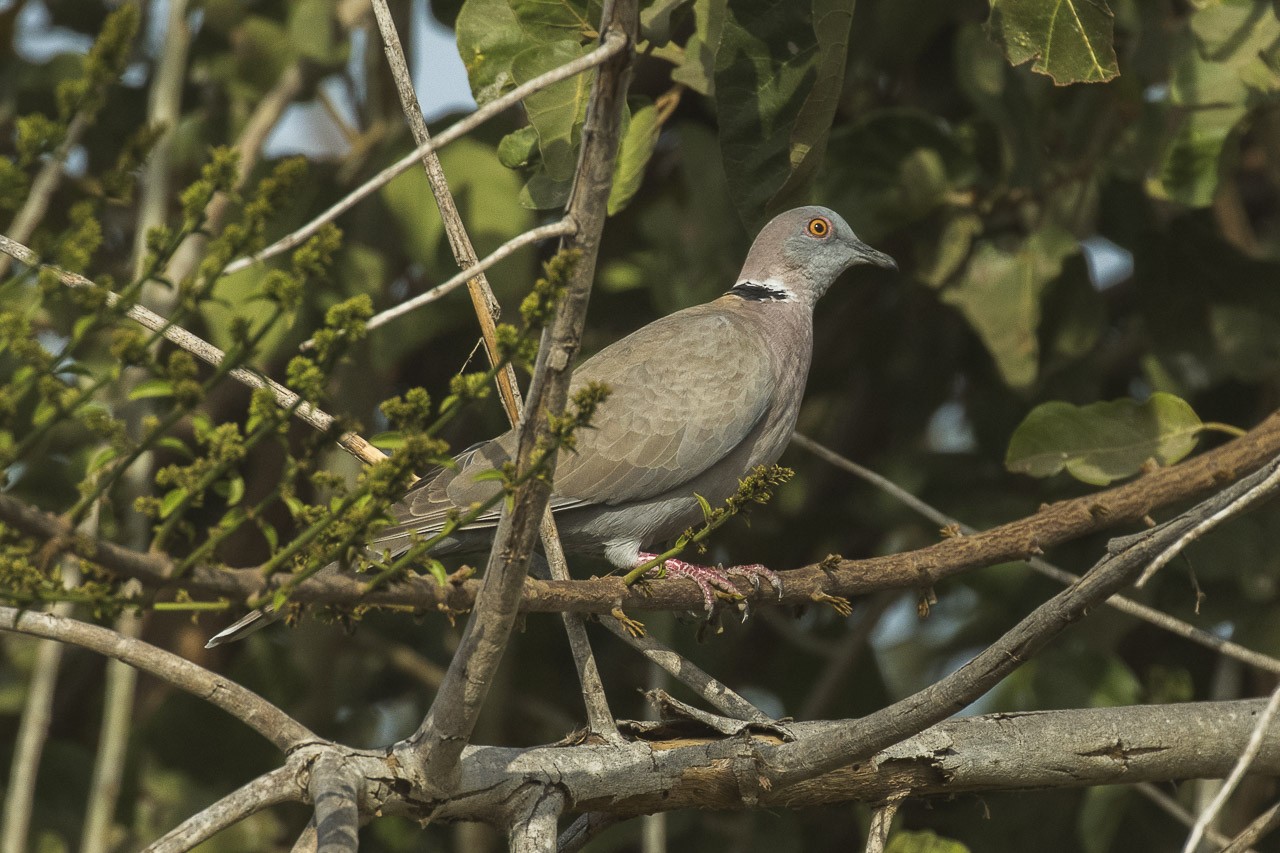Red-eyed Dove
A species of Turtle-doves and Collared-doves, Also known as Redeye Turtle Dove Scientific name : Streptopelia semitorquata Genus : Turtle-doves and Collared-doves
Red-eyed Dove, A species of Turtle-doves and Collared-doves
Also known as:
Redeye Turtle Dove
Botanical name: Streptopelia semitorquata
Genus: Turtle-doves and Collared-doves
Content
Description General Info
 Photo By Francesco Veronesi , used under CC-BY-SA-2.0 /Cropped and compressed from original
Photo By Francesco Veronesi , used under CC-BY-SA-2.0 /Cropped and compressed from original Description
The red-eyed dove is a largish, stocky pigeon, typically 30 cm (12 inches) in length. Its back, wings and tail are pale brown. When flying, it shows blackish flight feathers. The head and underparts are dark vinous-pink, shading to pale grey on the face. There is a black hind neck patch edged with white. The legs and a patch of bare skin around the eye are red. The call is a loud doo-doo-du-du. Sexes are similar, but juveniles are duller than adults, and have scalloping on the body feathers. Red-eyed doves eat grass seeds, grains and other vegetation. They often forage on the ground. 
Size
30 cm
Colors
Brown
Black
Gray
Pink
Nest Placement
Tree
Feeding Habits
Red-eyed Dove primarily consume grass seeds, grains, and other plant materials. They typically forage on the ground, employing a pecking method to gather food, and display no unique dietary adaptations.
Habitat
The red-eyed Dove thrives in a variety of habitats throughout Sub-Saharan Africa, typically found in dense woodland, Acacia thickets, and riparian gallery forests, yet avoiding the deep interiors of rainforests. They are distinguished by their preference for environments proximate to water sources, such as riverine forests and mangroves. The red-eyed Dove also adapts to human-altered landscapes, frequenting farms, plantations, urban parks, and gardens, where large trees provide essential nesting sites. Despite their adaptability, they steer clear of arid desert regions.
Dite type
Granivorous
General Info
Feeding Habits
Bird food type
Behavior
Females lay two white eggs at a time. This species builds a stick nest in a tree and lays two white eggs. Its flight is quick, with the regular beats and an occasional sharp flick of the wings, which are characteristic of pigeons in general. 
Distribution Area
It is distributed through most of Sub-Saharan Africa, except in desert zones. It is a common, if not abundant, species in most habitats other than deserts. Like several other species in this genus, they are not particularly gregarious and often feed alone or in pairs. They can be found in forests near rivers. 
Species Status
Not globally threatened.